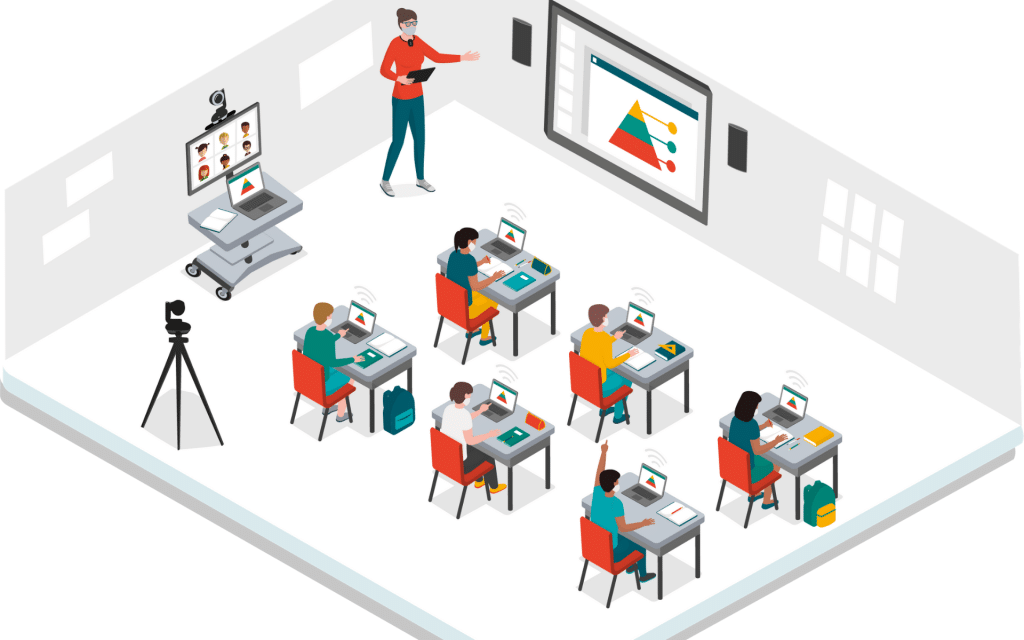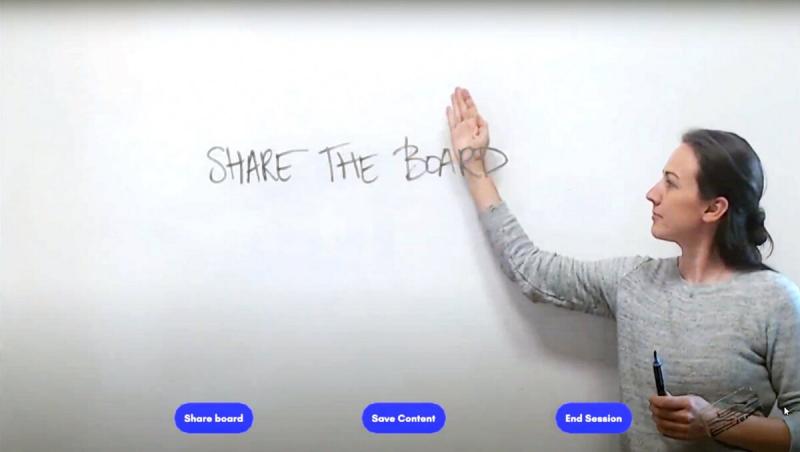
Whiteboards are a mainstay of any meeting room. The large, easy-to-use, shared surface naturally elicits creativity and collaboration. We’ll also find them (or their cousins, the blackboards) in just about every classroom on the planet. Their size makes them natural teaching tools, allowing educators to quickly illustrate concepts to scores of students at a time. But what happens to these tools when not everyone is physically present around them?
Since the dawn of the internet, remote learning has steadily grown in popularity. The chance to learn practically anything, from practically anywhere is nothing short of revolutionary. The Covid-19 pandemic and resulting restrictions accelerated the changes brought about by the internet itself.
Though at first many institutions were thrust into an exclusively remote learning environment, most are now settling into a hybrid classroom – where part of the class is physically present while the rest participates remotely. Moreover, changing expectations with regard to health and safety and a steady normalization of distance learning seem to indicate that this hybrid scenario is here to stay. Indeed, it may become the dominant paradigm.
Hybrid learning poses a set of distinct challenges. For one, educators can no longer rely on offline-only tools (such as a whiteboard or blackboard) or online-only tools (such as digital whiteboards) exclusively, to address their students. Doing so would be highly inefficient, requiring teachers to do a fair amount of double-work.
For another, simply pointing a camera at a teacher’s board puts all remote participants at a disadvantage, compromising their ability to engage in the learning process.
Hybrid learning

Specialized hardware – such as touchscreens, smartboards, or tracking cameras – has been proposed as a solution to the challenges brought about by hybrid learning. This solution has two critical flaws, however: firstly, the price of such equipment eliminates it as a possibility for all but the most affluent of school systems.
There are over 100 million teachers worldwide and most of them simply cannot afford such tools. Secondly, the immobility of hardware-based solutions renders them useless in many scenarios. And it doesn’t take a pandemic to illustrate this point: there are many everyday reasons which may keep a teacher from being able to make it to class.
One particular hardware solution has become increasingly popular, in response to the need for hybrid learning: specialized cameras mounted directly over whiteboards allow contents to be streamed online, allowing presenters to use traditional tools while ensuring legibility and greater engagement with remote participants.
This form of “whiteboard capture” does seem to address the unique challenges of hybrid classrooms but it falls prey to the same flaws of other hardware solutions: high cost and immobility.
ShareTheBoard

ShareTheBoard – a new market entrant in whiteboard capture solutions – appears to have solved the issues brought about by hybrid learning without falling into the traps of hardware-based alternatives. As a web application, ShareTheBoard runs on any laptop.
Teachers have but to point their computers at their boards and the software does the rest: content is identified and amplified in real time, obstacles (such as the teachers themselves) are made to appear transparent, and all identified content is streamed online.
Remote students can then save those contents at any time and even have the ability to contribute content of their own. This allows students to step up to the proverbial board, even when participating at a distance.
Best of all, the solution requires no new hardware or skills. Teachers accustomed to using video conferencing applications will have no problem using ShareTheBoard and can benefit from its capabilities anywhere, even when they’re unable to leave their homes.
School administrators will appreciate the categorically lower price tag compared with hardware-based solutions as well as the ability to scale licenses instantly – not to mention never having to support or replace expensive gadgets.
Naturally, the solution solves similar challenges outside of the classroom. The hybrid scenario is no stranger to IT and marketing professionals or program managers coordinating cross-functional teams. Here too, having partial attendance leads to double-work, frustration, and general inefficiency.
The ability to actually conduct a whiteboarding session even when some attendees are participating remotely can make or break a project. Now it seems that ability no longer carries a hefty price tag or a physical tether.
In a world which has gone remote and – at least to some extent, doesn’t appear to be coming back – solutions which solve the unique challenges of hybrid participation deserve greater attention. This is particularly true for solutions that are accessible both in price and real world situations.










